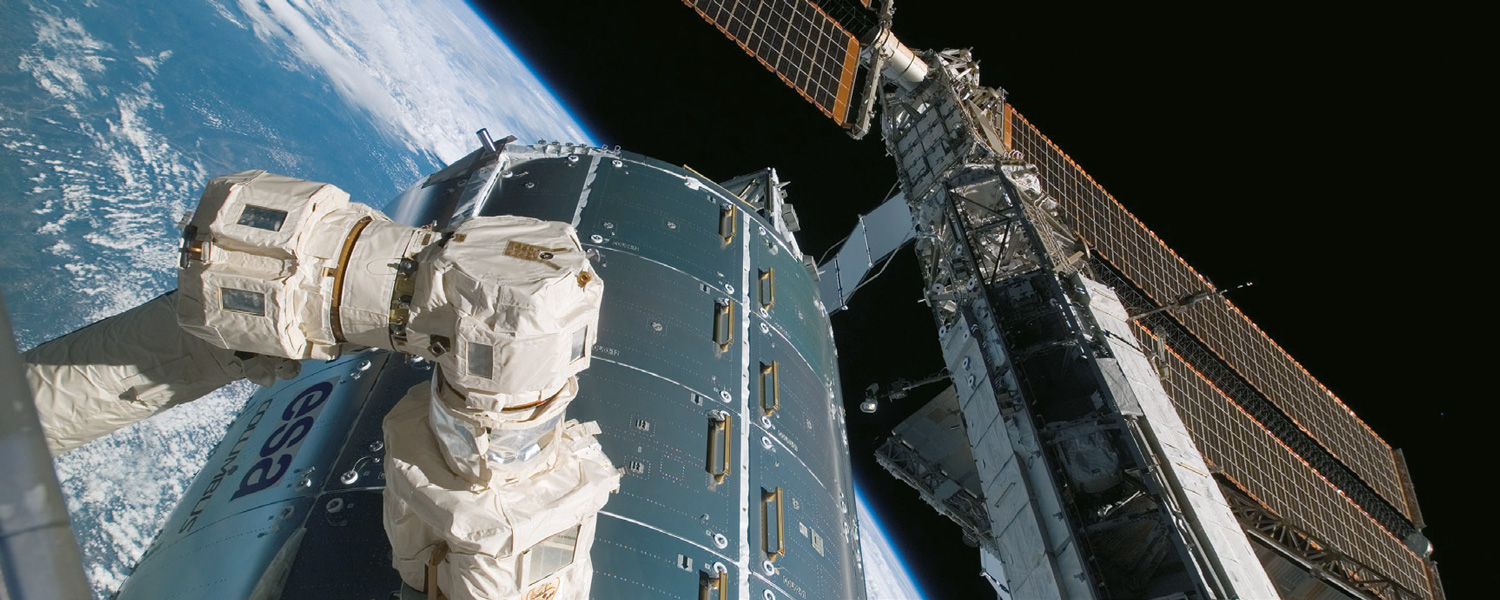
The Columbus module of the International Space Station (ISS) has been orbiting Earth since 2008. Natural micrometeoroids and anthropogenic space debris are impacting the module ever since. Columbus is well protected against this threat, because the meteoroid and debris protection system (MPDS) has been developed and tested at EMI. Due to its large surface area and its long stay in orbit, many small impact craters accumulated – which is a treasure for science! The models to predict such impacts rely on data: in-situ impact sensor measurements or mate- rial brought back to Earth. The most recent large data set of this kind was obtained from the Hubble space telescope solar arrays, which were replaced in 2002 for the second time and subsequently ana- lyzed on ground.
In September 2018, a team of DLR (German Aerospace Center), Universität Oldenburg, TU Braunschweig and Fraunhofer EMI could convince NASA and ESA to conduct a video survey of the outer surface of the Columbus module with the ISS robotic arm. Using these data, several thousands of craters were identified and analyzed using an automated process developed at EMI. The smallest visible craters have a diameter of less than half a millimeter, the largest ones are about eight millimeters in size. The newly obtained data allow to better prepare future missions against such impacts.